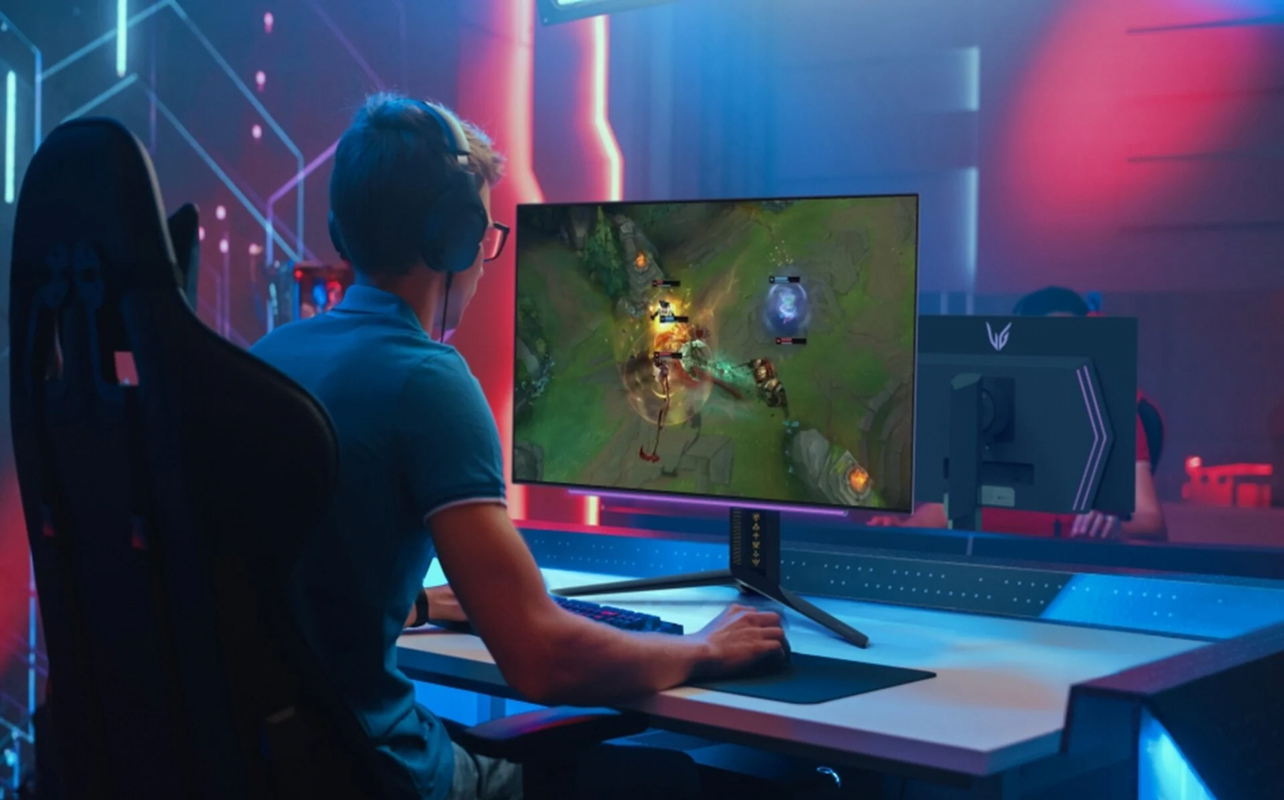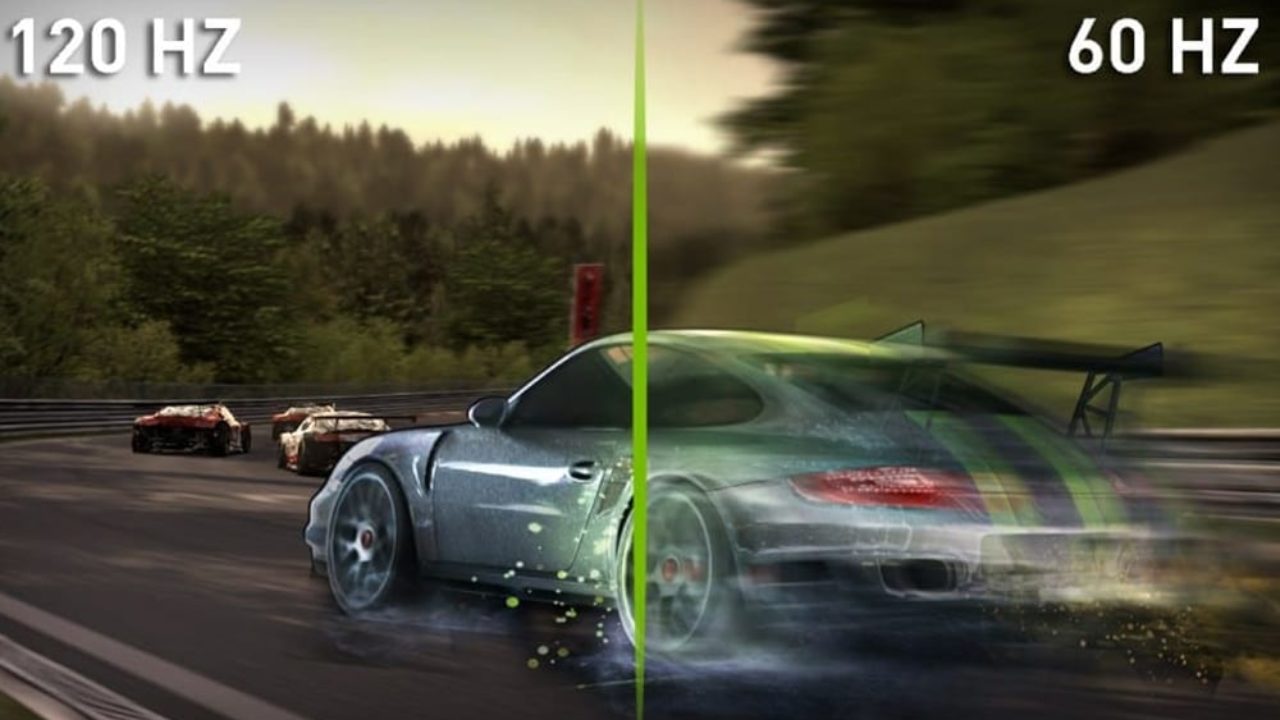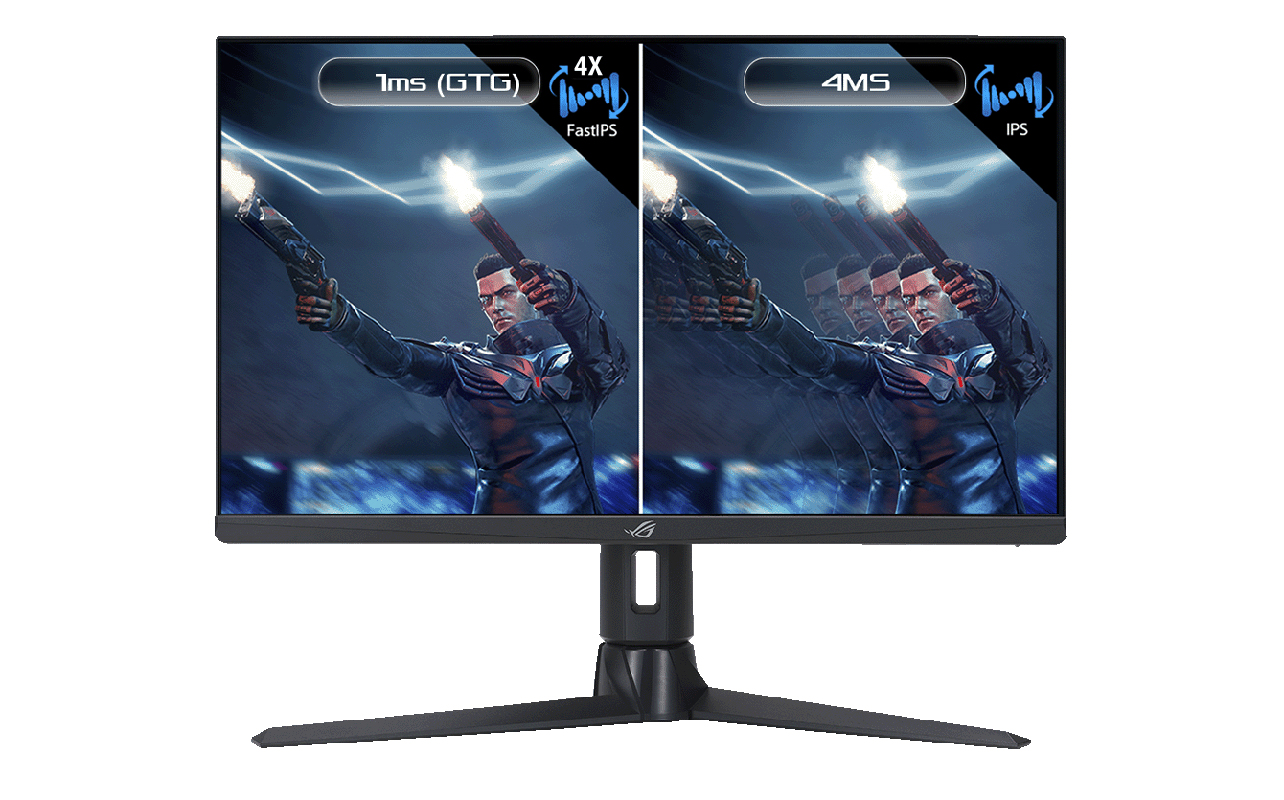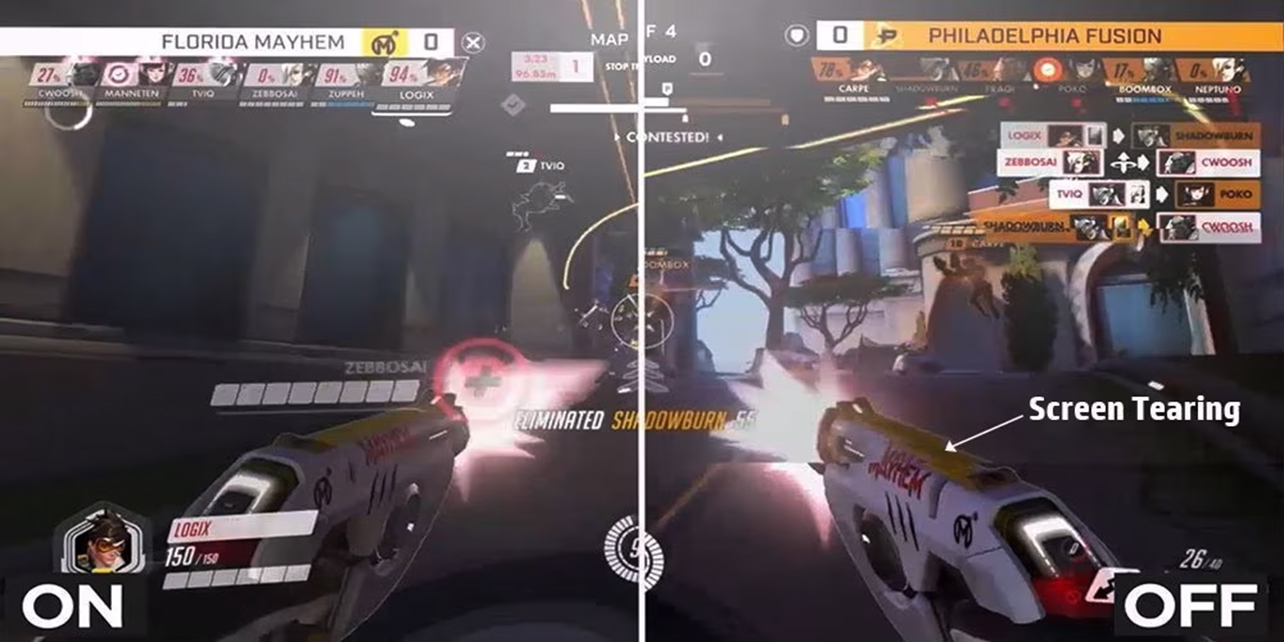
Picking the right gaming monitor can feel a little overwhelming when terms like refresh rate, response time, and HDR make it easy to get lost in technical jargon. Your monitor doesn’t just display visuals; it shapes how you experience every in-game moment. Whether you’re chasing competitive wins in fast-paced shooters or diving into cinematic story-driven adventures, the right monitor can make a huge difference in immersion, responsiveness, and overall enjoyment.
Once we break everything down in simple, everyday language you’ll know exactly what to look for by walking you through the essential features and specifications that matter most. By the end, you’ll understand what those numbers mean, why they’re important, and how to match a monitor to your gaming style and hardware. You’ll also get tips for balancing performance with visual quality.
Refresh rate: how smooth is your game?
Refresh rate measures how many times your monitor updates the picture every second, expressed in hertz (Hz). Imagine flipping through a flipbook—the faster the pages turn, the smoother the animation. In gaming, higher refresh rates translate directly to smoother motion and more responsive gameplay.
For casual gamers, 60Hz can still feel fine, but modern titles often move too fast for it to feel fluid. More immersive games need smoother experiences, so gamers usually aim for 120Hz or 144Hz to dramatically reduce motion blur and make action sequences feel more lifelike. Competitive players, especially those in first-person shooters or fast-paced esports titles, will go for 240Hz or even 360Hz monitors. To them, the difference isn’t just cosmetic—it can influence reaction times when split-second decisions matter.

That doesn’t guarantee a high-refresh monitor delivers smooth gameplay alone. Your PC or console must be able to output enough frames per second (FPS) to match the monitor. For example, while the PS5 and Xbox Series X can handle up to 120Hz at 4K resolution, mid-range PCs might max out around 144Hz at 1440p. That’s why pairing the right hardware with the right monitor makes such a big difference.
You could make it even smoother if you find Variable Refresh Rate (VRR) support. VRR syncs the monitor’s refresh rate with your GPU output, eliminating tearing and stuttering when frame rates fluctuate. More and more modern monitors now support both FreeSync and G-Sync, providing flexibility whether you have an AMD or NVIDIA graphics card.
Response time: how quickly pixels react
While refresh rate focuses on how smooth motion appears, response time determines how sharp it looks. The response time is based on how quickly a pixel changes from one colour to another, usually measured in milliseconds (ms). The lower the number, the better it can do to lower response times reduce blurring, ghosting, and trailing effects, all of which are important in fast-paced games.
Monitors advertise response times in different ways. The most common is GtG (gray-to-gray), which measures the time it takes for a pixel to change from one shade of gray to another. Another metric, MPRT (moving picture response time), measures how long a pixel remains visible and is often more relevant for motion clarity. Regardless of the measurement, faster transitions generally mean better in-game clarity.

Different panel technologies affect response times. TN (Twisted Nematic) panels have traditionally been the fastest, reaching sub-1ms speeds, but they compromise on colour accuracy and viewing angles. IPS (In-Plane Switching) panels now achieve 1ms in many models while offering superior colours and wider viewing angles. OLED panels deliver near-instant response and incredible contrast, making fast motion look crisp and vibrant.
These metrics matter for competitive esports players, so prioritizing low response times can help stay ahead of opponents. Casual or story-driven gamers can tolerate slightly slower response times but should still look for panels that balance speed and visual quality.
Resolution and screen size: how sharp do you want it?
Resolution defines the number of pixels a screen can display, while screen size influences how those pixels are spread out. Higher resolution gives crisper images, but pairing it with a very large monitor without a powerful GPU can lower frame rates and reduce performance.
- 1080p (Full HD): Perfect for 24–27-inch screens. Affordable and easy to run at high FPS, making it ideal for competitive gaming where speed is critical.
- 1440p (Quad HD): Considered the sweet spot in 2025, offering a balance between sharp visuals and smooth performance. Works well on 27–32-inch monitors.
- 4K (Ultra HD): Stunning, cinematic visuals for large monitors or story-driven games. Best suited for powerful PCs or consoles like PS5/Xbox Series X. Without sufficient hardware, you risk low FPS despite beautiful graphics.
- Ultrawide (21:9) and super ultrawide (32:9): Expands your field of view, enhancing immersion in racing, simulation, or open-world games. Also great for productivity, allowing multiple windows and apps to remain visible.
When choosing resolution and screen size, consider your GPU capabilities, the types of games you play, and your preferred balance between performance and visual fidelity.
Panel type: IPS vs VA vs OLED vs TN
The monitor panel determines colour reproduction, contrast, viewing angles, and response speed. Each type has advantages:
- IPS (In-Plane Switching): Offers vibrant colours, wide viewing angles, and now even 1ms response in many models. Great for mixed use, including competitive gaming and cinematic experiences.
- VA (Vertical Alignment): Provides deep blacks and strong contrast, ideal for dark games and movies. Response times are slower, so fast-paced shooters may not be optimal.
- TN (Twisted Nematic): Extremely fast and affordable but sacrifices colour accuracy and angles. Best for budget-conscious esports players.
- OLED: Premium option with infinite contrast, true blacks, brilliant colour, and near-instant response. Downsides include higher cost and potential burn-in over long-term use.
Hybrid panels like QD-OLED combine OLED’s stunning visuals with higher brightness and improved longevity, bridging the gap between performance and colour accuracy. Your choice should reflect whether speed, colour, or contrast matters most to your gaming experience.

Adaptive sync: G-Sync, FreeSync and VRR
Screen tearing occurs when a monitor shows portions of multiple frames at once. Adaptive sync technologies solve this by aligning your GPU’s output with the monitor’s refresh rate.
- G-Sync: NVIDIA’s solution, highly reliable and smooth but tends to cost more.
- FreeSync: AMD’s alternative, widely available and generally more affordable.
- VRR (Variable Refresh Rate): Increasingly common on consoles, including PS5 and Xbox Series X through HDMI 2.1.
Modern monitors often support both G-Sync and FreeSync, making them flexible for different hardware setups. For console gamers, ensure VRR is explicitly supported to maximize smooth gameplay.
Input lag and gaming modes
Even a monitor with high refresh and low response time can feel sluggish if input lag is high. Input lag measures the delay between pressing a button and seeing the action on screen. Here, too, precision matters, not just for esports pros, but for anyone to enjoy a game. Watching a show or movie with an audio delay isn’t fun, and this isn’t all that different.
- Under 5ms: Almost unnoticeable for most gamers.
- Around 1ms: Gives competitive players an edge in fast-paced titles.
Many monitors feature Game Mode or Instant Mode, which reduces processing delay by bypassing certain image enhancements. This ensures your actions translate to screen movements as quickly as possible.
HDMI, DisplayPort and connectivity
Ports may seem minor, but they determine how you can connect devices and at what performance, so they’re worth noting when looking up specs:
- HDMI 2.1: Required for consoles like PS5/Xbox Series X to achieve 4K at 120Hz and to support VRR.
- DisplayPort 1.4/2.0: Standard for PC gaming, enabling high refresh rates at high resolutions (e.g., 1440p at 240Hz or 4K at 144Hz).
- USB-C: Useful for laptops, Steam Deck, ROG Ally X, and hybrid setups, allowing quick connection with power and video in one cable.
For multi-device setups, look for monitors with multiple inputs to avoid constant cable swapping.
Extra features worth noting
Beyond core specifications, a few extra features improve comfort and immersion:
- HDR (High Dynamic Range): Enhances brightness, colour depth, and contrast. Aim for HDR600+ for a noticeable difference.
- Ergonomics: Adjustable stands and VESA mounts make extended gaming sessions more comfortable.
- Audio: Built-in speakers or audio pass-through simplify console setups.
- RGB lighting: Adds flair without affecting performance.
- Eye comfort: Flicker-free screens and blue light filters protect your eyes during long sessions.
These additions can enhance your setup without compromising performance, especially for long gaming sessions or mixed-use setups.
Choosing a monitor based on playstyle
Different types of gamers benefit from different setups:
- FPS/Competitive gamer: 24–27-inch, 1080p or 1440p, 240Hz+, 1ms response, VRR support. Focus on speed and responsiveness.
- RPG/story-driven gamer: 27–34-inch, 1440p or 4K, HDR, IPS or OLED panels. Prioritise colour accuracy and immersion.
- Console gamer: HDMI 2.1, VRR, 120Hz refresh, optional built-in audio. Focus on compatibility and smooth visuals.
- Content creator + gamer: 32-inch and higher, 4K, IPS/OLED, accurate colours. High refresh helps, but clarity and colour take priority.
Level up your gaming setup
Ultimately, the best gaming monitor balances your budget, your hardware, and your gaming style. Competitive players should prioritize refresh rate and response time to eliminate latency that could prove the difference between a win or loss. Cinematic gamers might value resolution, HDR, and OLED visuals more for the aesthetic elements involved.
If you’re ready to upgrade, explore gaming monitors at Best Buy Canada or visit a store to chat with experts who can help match a display to your setup. For deeper insights into building or upgrading your gaming rig, check out our PC gaming buying guide.
This article was drafted using AI technology and then reviewed, fact-checked, and revised by a member of our editorial team.





